50+ Sample Participation Agreement
-
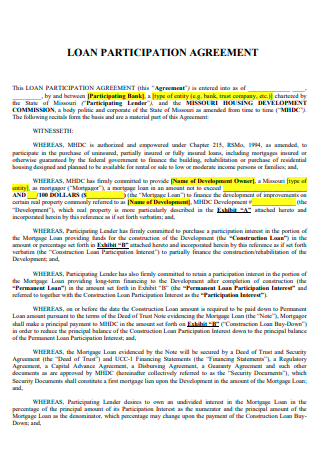
Loan Participation Agreement
download now -
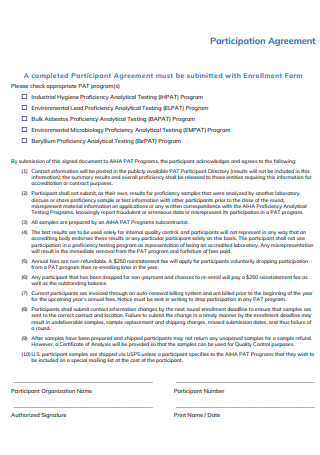
Participation Agreement Template
download now -
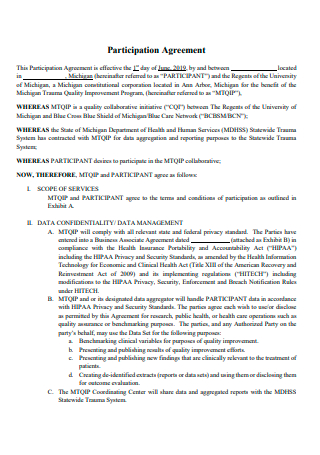
Basic Participation Agreement
download now -
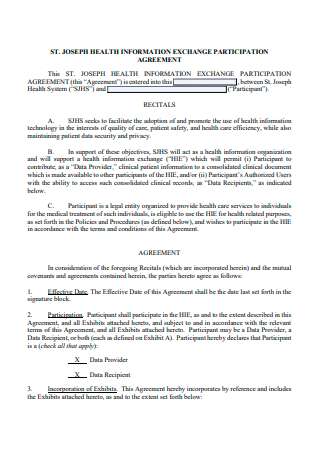
Health Information Exchange Participation Agreement
download now -
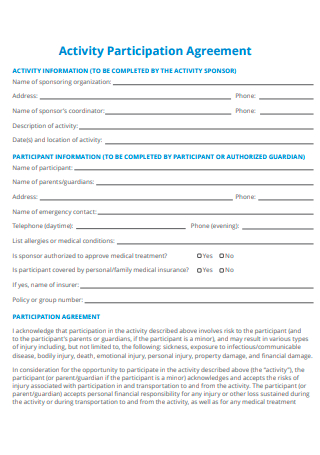
Activity Participation Agreement
download now -
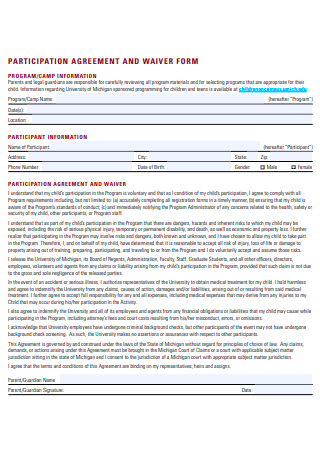
Participation Agreement and Waiver Form
download now -

Institutional Participation Agreement
download now -
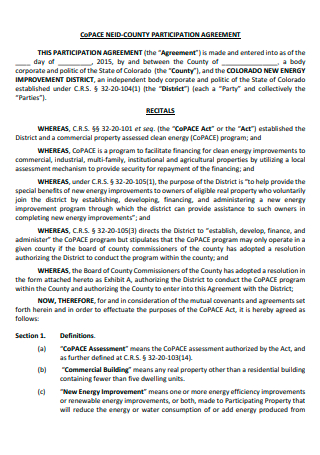
Participation Agreement Example
download now -

Participation Agreement in PDF
download now -
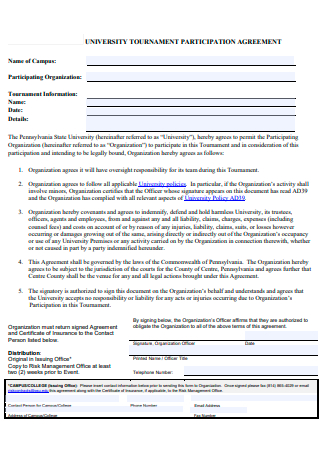
University Tournament Participation Agreement
download now -
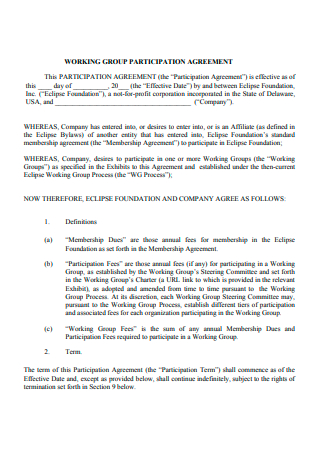
Working Group Participation Agreement
download now -
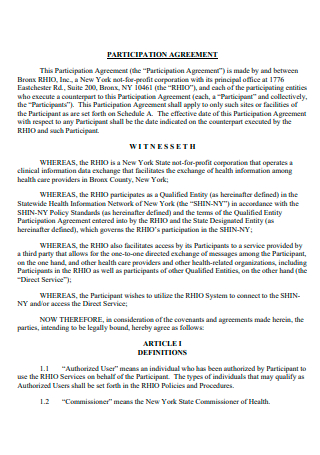
Standard Participation Agreement
download now -

Assurance Participation Agreement
download now -
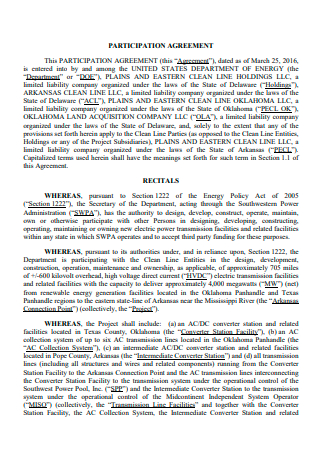
Formal Participation Agreement
download now -
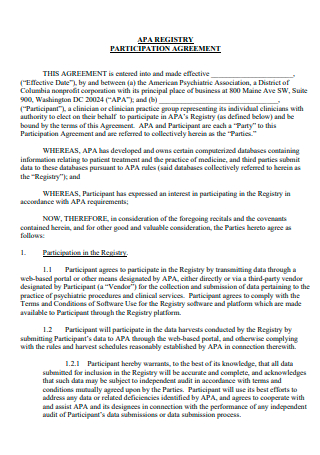
Registry Participation Agreement
download now -

Student Participation Agreement
download now -
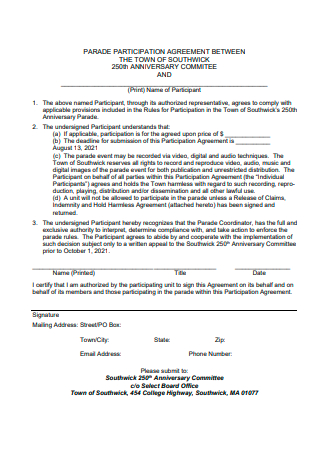
Parade Participation Agreement
download now -
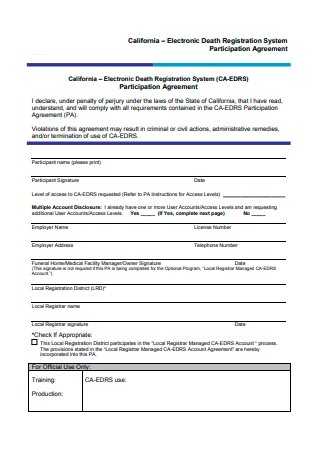
Electronic Death Registration System Participation Agreement
download now -
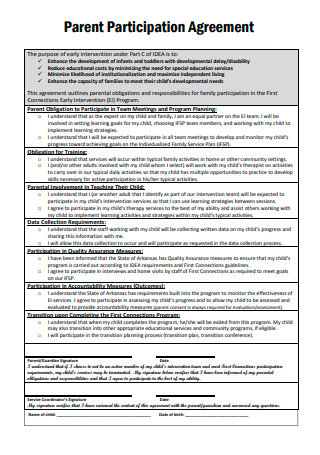
Parent Participation Agreement
download now -

University Participation Agreement
download now -
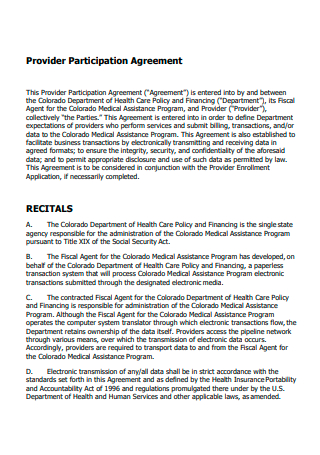
Provider Participation Agreement
download now -

Dual Enrollment Student Participation Agreement
download now -
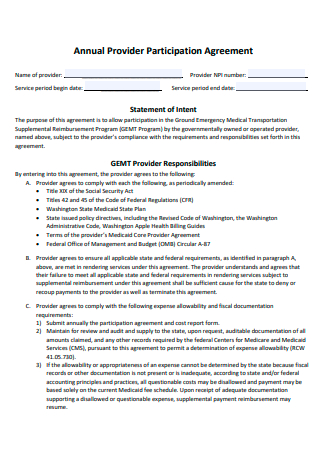
Annual Provider Participation Agreement
download now -
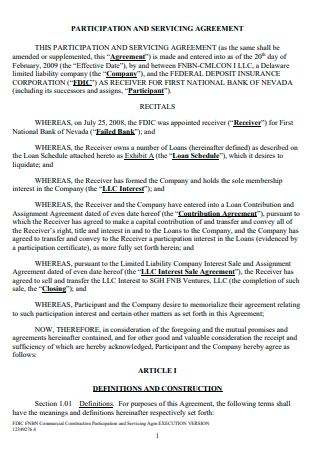
Participation and Servicing Agreement
download now -
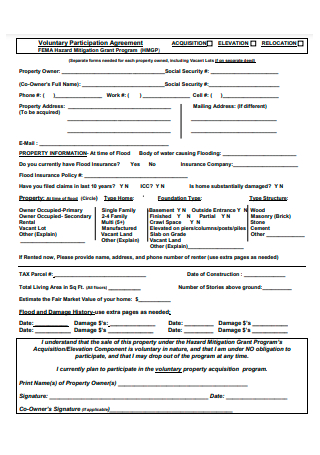
Voluntary Participation Agreement
download now -

University Activity Participation Agreement
download now -

Workshop Youth Participation Agreement
download now -
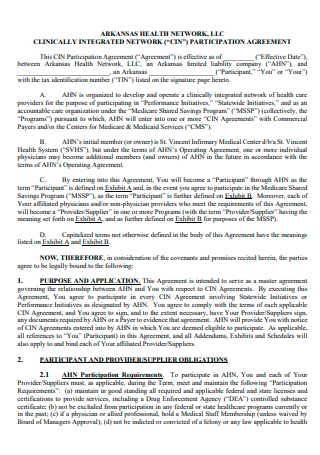
Clinically Integrated Network Participation Agreement
download now -

Printable Participation Agreement
download now -
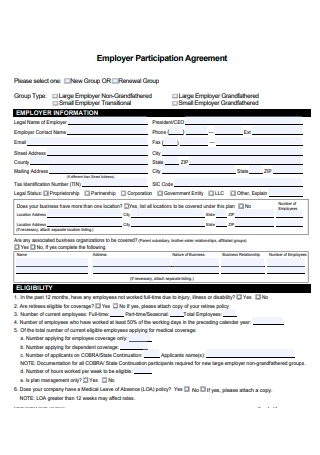
Employer Participation Agreement
download now -
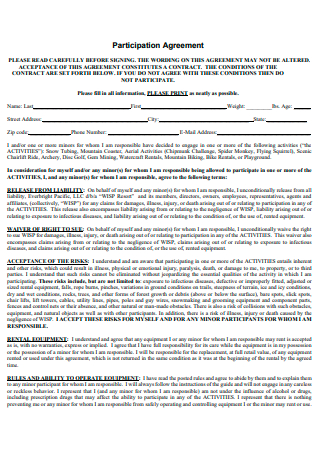
Participation Agreement Format
download now -
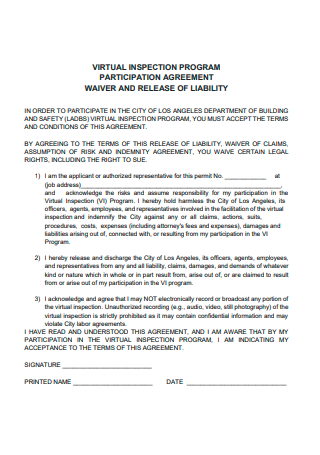
Virtual Inspection Program Participation Agreement
download now -
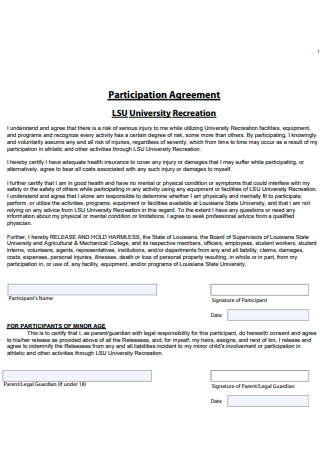
University Recreation Participation Agreement
download now -
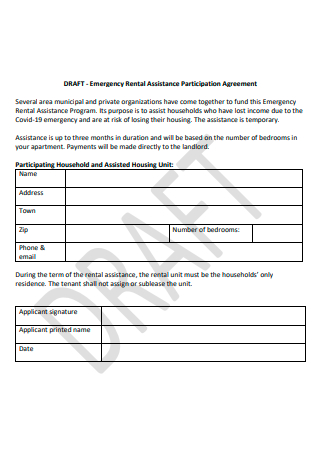
Draft Participation Agreement
download now -
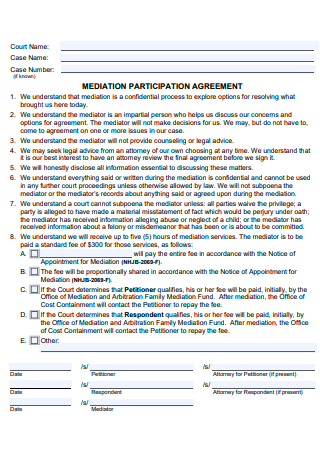
Mediation Participation Agreement
download now -
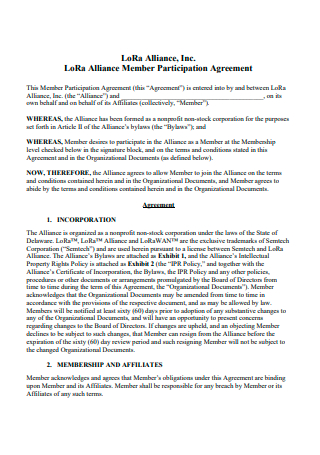
Alliance Member Participation Agreement
download now -
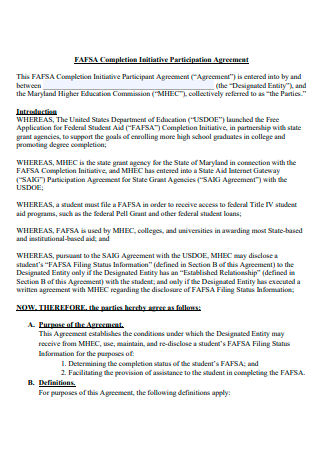
Completion Initiative Participation Agreement
download now -

Trust Participation Agreement
download now -
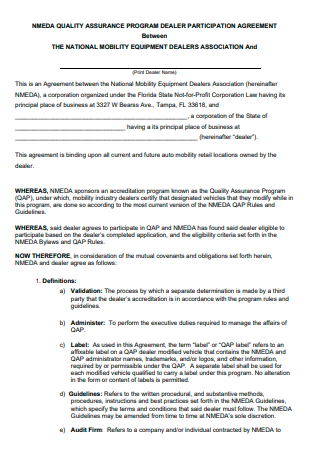
Quality Assurance Program Dealer Participation Agreement
download now -

Agency Participation Agreement
download now -

Player Participation Agreement
download now -
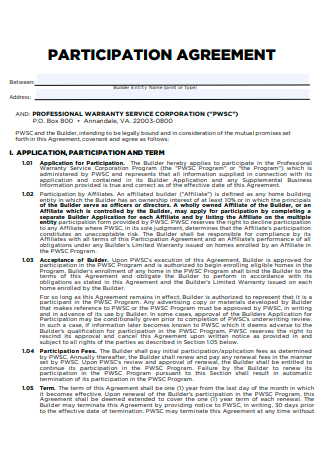
Simple Participation Agreement
download now -

Customer Participation Agreement
download now -
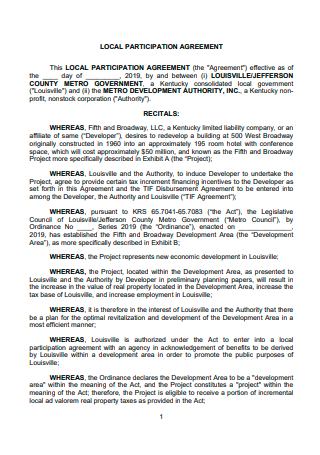
Local Participation Agreement
download now -
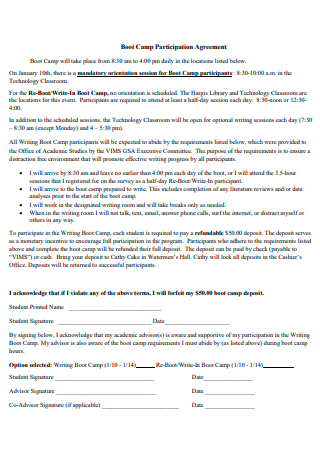
Camp Participation Agreement
download now -
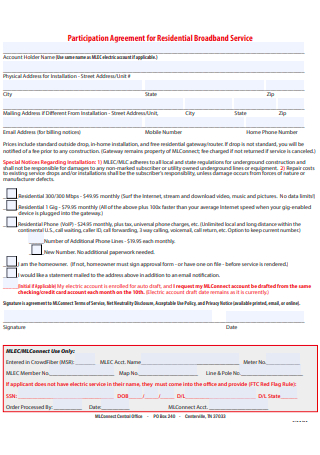
Participation Agreement For Residential Broadband Service
download now -
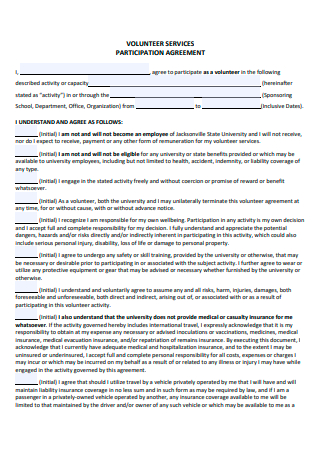
Volunteer Services Participation Agreement
download now -
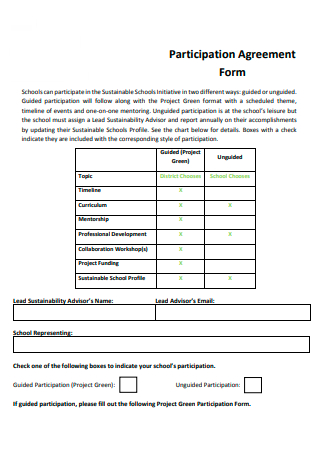
Participation Agreement Form
download now -
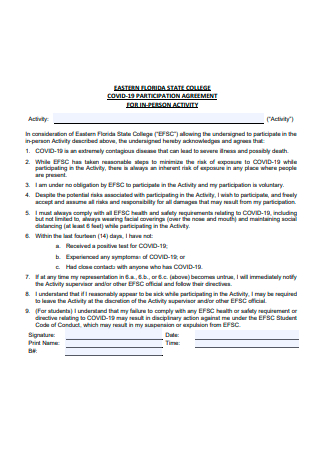
Covid-19 Participation Agreement
download now -
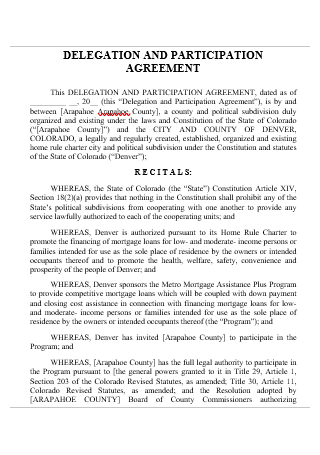
Delegation and Participation Agreement
download now -
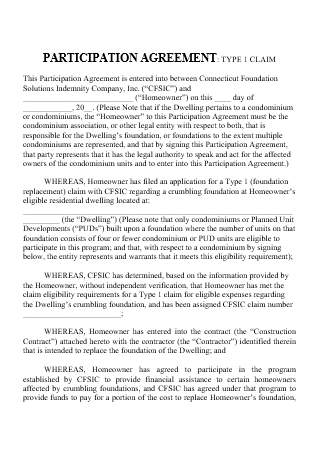
Participation Agreement in DOC
download now
What Is a Participation Agreement?
A participation agreement can be characterized as a contract between persons who jointly acquire a property or product and offer a legal basis for any necessary action. In general, any participation should be noted to formally certify a party’s involvement in other agreements and stipulations that are legally enforceable. The significance of a sample participation agreement hinges on the accurate monitoring of party involvement with additional obligations. According to statistics, one-third of adult Americans volunteer at least once a year. In addition, 35.97% of volunteer time is committed to fundraising movement.
Benefits of Public Participation
Engagement in the community can transform communities. It ensures fair, egalitarian, and sustainable outcomes by encouraging public engagement in projects of societal effect. It is a vital decision-making process for any organization, government, or individual driving community-impacting projects. The effectiveness of traditional, executive-led approaches to community projects is declining. Collaborative decision-making is gradually replacing the outmoded top-down method, and communities are demanding a more significant say in the creation and delivery of services that impact them. Before deciding on a course of action, decision-makers must have a comprehensive awareness of their community’s needs and ambitions through an inclusive problem-solving process. Here are six reasons why a successful approach to community participation is crucial for decision-makers and the general public.
Tips To Be Engaged In Your Community
Whether community management is your full-time job or just one of many hats you wear when running a business, the community engagement tactics listed below are for you. They can mean the difference between a slightly informal social media group and an online home where people share and grow together. They are based on tried-and-tested approaches that are simple to implement.
1. Welcome a member warmly
You might say something along those lines. Or you may remain silent and hope for the best! But if you do, you’ll miss a chance to welcome newcomers and make them feel at home. Just a few brief words of support and instruction are all it takes to reassure someone that they are in the appropriate setting and with the right people. An automatic email or direct message would work well. For extra points, think about organizing icebreaker activities on a weekly or monthly basis and creative ways for newcomers to introduce themselves.
2. motivate users to spend time on their profile.
Your online profile serves as your passport. A means of letting others know who you are, what you stand for, and why they should know and believe in you. It’s things like postal addresses and bank information for websites like Amazon. Passions, experiences, and perspectives are essential to an online community. People find getting to know one another more difficult without a profile. Therefore, encourage them a little to prevent them from departing unhappy. You can explain to them what they could gain as part of your community engagement tactics, or even better. You can motivate them! Ask them to capitalize on the passion that is probably the foundation of your community. Even hold contests to find the most intriguing new profiles. Be imaginative!
3. Be responsive
Your dream is coming true because you created the area, drew in the crowd, and got things moving. The next exciting part is making deep connections with people who share your goal. It’s all about dialogue; your members look to you to lead the way. It is insufficient to start a conversation or post anything and then leave without waiting for a response. Reply to comments instead with observations, criticism, follow-up inquiries, or tags for further members who might be interested. If not, your people might begin to feel invisible. Although you don’t need to micromanage every discussion, you should aim to be active, personable, and visible on the community platform.
4. To maintain trust and order in your community, be forceful yet fair in your approach.
Leading by example entails more than simply inviting others to participate. It would help if you also established expectations for how others should behave. And remember, you get to determine what it means, especially if you own your community space rather than Facebook or another internet giant. So, what makes sense in your particular community? It is your responsibility to enforce your rules and guidelines. So organize your community-building efforts ahead of time. What will you do if a discussion becomes too heated? Where do you draw the line when it comes to good content? How will you balance being the friendly face and the authority figure? It’s nothing to be worried about, but it’s always a good idea to be prepared.
How To Volunteer
Volunteering is an excellent opportunity to become engaged in your community and make a positive influence. Volunteering can also look good on your resume and help you stand out from the crowd. Finding volunteer options that meet your schedule and interests is critical. Here are some things you can do to help your community:
1. Choose which causes are important to you.
Volunteering for an organization or subject about which you are enthusiastic can improve the likelihood that you will enjoy the opportunity. Before commencing a volunteer position, consider what you truly care about. If you’re passionate about disability rights, you might like volunteering in a special needs center. The more precise you are about your interests and hobbies, the more likely you will find a volunteer job that is a good fit for you.
2. Create a resume highlighting the talents and information you can provide.
Many volunteer jobs require persons to have specific talents. For example, an animal shelter seeking an administrative volunteer will need prior experience. Examine your existing skills to determine if there are any particular roles you may volunteer for. Most NGOs also have entry-level positions that train you on the fundamentals, especially if it’s a long-term position. Creating a volunteer CV that includes your previous volunteer experience and your talents and interests can also be beneficial when applying for possibilities. A résumé allows the organization to immediately see what you have to offer and assist you in finding the best volunteer job for you.
3. Determine how frequently you can volunteer.
Determine how many hours and days per week or month you can devote to the employment. For example, if you work full-time during the week, you might only want to volunteer on weekends or holidays. You may wish to volunteer more frequently if you are a stay-at-home mom. Being realistic about your availability can help you avoid overcommitting when volunteering.
4. Look into volunteer opportunities in your area.
Once you’ve determined your interests and availability, you may start browsing for opportunities in your town. Inquire with friends and family members if they are aware of any volunteer opportunities that match your interests. If you can’t discover a position that interests you, look beyond the conventional nonprofit groups. Consider contacting a high school or college representative to see if they have any openings.
5. Consider using a volunteer site to obtain the necessary information for the volunteer role.
A volunteer website is another excellent resource for finding volunteer opportunities in your neighborhood. These websites allow you to enter your talents, preferences, and schedule and connect you with opportunities in your area. Also, before applying for a volunteer position, be sure you understand the specifics. Learn about the jobs you’ll be performing, the level of commitment required, and any necessary training. The more details you have, the better.
6. Apply for the volunteer position
Many volunteer opportunities require you to fill out an application. While these applications are usually not as rigorous as job applications, you should treat them as if they were for a professional position. Take the time to check your grammar and spelling, and offer references if requested. If the work requires you to lead others or handle sensitive material, you may additionally need to prepare for an interview. If you haven’t heard back from an organization after applying for a volunteer position, follow up two or three days later. Because many nonprofit organizations are busy and have limited resources, responding to questions for volunteer roles may take longer. Following up ensures that your volunteer application is received and expresses your enthusiasm for the opportunity.
7. Complete any necessary training and begin with a small commitment.
Complete any mandatory training after you have landed a volunteer role. Most organizations will ask you to obtain a certification or finish a training course before you can begin volunteering. Also, when you first start, arrange your calendar a month or two ahead. Before making a complete commitment, see if you appreciate the position and the organization. Consider contributing more of your time to the group if you’ve decided you want to continue volunteering in this capacity.
FAQs
Is participation a loan?
Loans issued by many lenders to a single borrower are participation loans. Several banks, for example, might contribute to funding one exceedingly significant loan, with one of the banks serving as the “lead bank.” This lending institution solicits other banks’ participation to share the risks and rewards.
What is a participation audit?
A participation audit is a financial information audit based on contract language between a provider and a distributor. The “providers” in the entertainment industry are the actors, actresses, writers, directors, and so on, while the “distributor” is often the studio.
What is a commercial participation loan?
These loans give borrowers more spending power while lowering lenders’ default chances. Participation mortgages are frequently utilized in commercial real estate transactions that expect continued rental income, such as purchasing office buildings and apartment complexes.
Have you ever tried to experience a joint buy with other business people as a business owner? Was a company contract required to bind everyone’s consent to participate? To answer your query, there most certainly is. There has to be one, and it’s called a participation agreement. Check out the various templates below to utilize while you draft your agreement!
